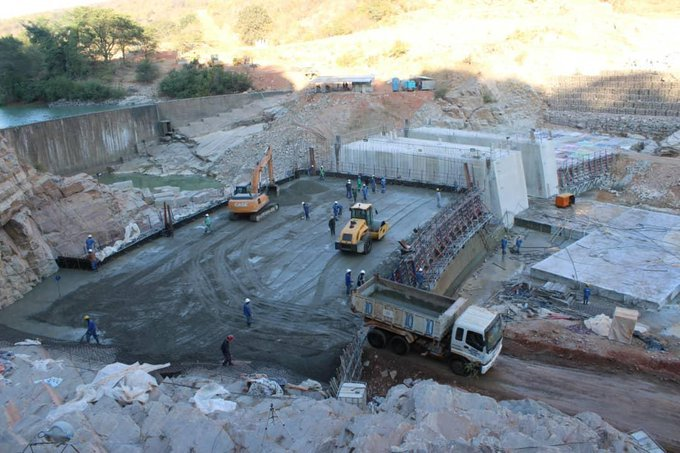About 350 families will have to vacate their homesteads to make way for the construction of the Gwayi-Shangani dam.
The dam with a holding capacity of 635 million cubic meters is expected to ease perennial water shortages in Bulawayo and other surroundings.
The project would be done in three phases, with the first phase being the dam construction, following by the laying of the pipeline and lastly power generation.
Speaking during a tour of the Gwayi-Shangani project on Wednesday, Assistant Resident Engineer Lucio Chayeruka, explained that due to the nature of the project, families along the pathway of the dam would have to be evacuated.
“We have the high flood level of the dam, as our dam is about 6 km downstream of the confluence of Gwayi river and the dam will have a stretch back of 28 km. The stretch back will have a magnitude of 52 km, which is the high flooding level that forms the dam reservation. We have a lot of homesteads in that area who will be affected and need resettlement,” he said.
The resident engineer noted that the matter was already in the office of the Ministry of Local Government, Public Works And National Housing who would conduct the resettlement.
He added that they had already done a survey that determined 350 families would need to move.
“I’m not sure of the number of homesteads that are going to be affected along the pipeline (a second phase of the Gwayi-Shangani project), but I’m very much aware that the 350 homesteads fall within the dam reservation,” Chayeruka said.
“Resettlement of the families is the sole responsibility of the Ministry of Lands, Agriculture, Water and Rural Settlement and Ministry of Public Works who would have to determine when the villagers are going to be resettled,” he said.
“But I would like to say as it stands to us, this is now urgent because once you start constructing the project must proceed. There’s a facility at the dam that we have incorporated in order that we don’t have a repeat of the disaster such as the one that happened at Tokwe Mukosi. We have all the figures of the properties that are upstream of the dam and how we are going to renovate some roads and bridges.”
Secretary General of the Matabeleland Collective, Jennifer Williams, part of the delegation that toured the project questioned whether the 350 families would be compensated.
She noted it was possible that they were most likely relocated from Kariba, which meant this would be their second evacuation.
“As civic society, we need to understand what the plan is for these families as they were never compensated for the Kariba evacuation. Are they going to be compensated now for Gwayi-Shangani and how do they retain their lives back together. I think because it’s dragging, there’s a sense of uncertainty in those communities that you are engaging as to whether they really need to move or this is just some talk,” she said.
Chairman of the Matabeleland Collective, Phanuel Sibanda, added that civic society must start engaging the 350 families as soon as possible to educate them.
“The advocacy on resettlement will never come from the engineer’s office, as it’s not their job plus they are not specialised in it. They may attempt to go to the 350 homesteads and tell them they have to move from their village but the language which the engineer will use will not be right. We need a buy in from those people, use the right language, our expertise, advice and counsel as advocacy lies with civic society,” he said.
“Please take this up, start now. Nothing bars you from doing this part of work to complement the engineer’s work. It’s not going in contrast or conflict but it is complementing the work done by the engineers. Whatever information the engineer has, must be educated to the communities and information from the communities must be educated back to the engineer.”

